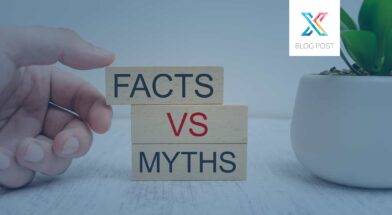So you’re a professional services firm providing an inconsistent client experience (CX). The inconsistency is across employees as well as offices. You may also provide an inconsistent employee experience (EX). Wondering how this affects the organization's bottom line and cross-selling abilities?
The most significant factor impacting your clients’ experience and loyalty is not the behavior of your client-facing employees. Their client-centric behavior is important. However, the key to the success of your CX program lies in operations. Does that surprise you? It shouldn’t.
Consistency
We believe the most important element of your firm’s CX program is consistency at every touchpoint. Who could be more central to drive consistency across all departments, practice areas, and offices? It’s your firm’s Operations team.
I assume you are gathering client listening data (a.k.a. feedback) as a foundational element of your CX management program. Qualifying your clients’ experience is an essential component of your overall strategy. If your firm is making investments in training your team to deliver positive CX and you are not getting feedback on how your efforts are being received, your investment is wasted. Sound harsh? Sorry, but it’s true.
Here are three reasons operations must take a leadership role in your firm’s CX initiative. As a leader in operations, you have the ability to:
- Identify ideal client profiles for increased profitability
- Create (or revise) organizational structures to empower employees
- Influence adoption across all areas within the firm
- Standardize processes that make the most sense for client types/employee types
- Create consistency from each practice area or discipline and or office
- Transfer brand loyalty from individuals to the firm
Identify ideal client profiles for increased profitability
Collecting feedback from clients allows individual departments or practice areas to see the impact of their actions and adjust as needed. As a leader in operations, you can view this data across all departments, practice areas, and offices. Analysis of cross-departmental or office data gives you the information you need to use Client Lifetime Value (CLV) analysis to create ideal client profiles and drive increased profitability.
Leveraging this information in your firm’s decision matrix lets you be more strategic in your firm’s decisions regarding what clients and projects to pursue.
Example
Take a look at this example:
Figure 1: Revenue / Profit / Sentiment by Industry Type
Figure 1 looks at information from 123 projects analyzed over five years. The “Average of Score” column represents the sentiment analysis from their Client Feedback Tool data. Results are based on our proprietary 1-7 scale, with 4 meaning “Met Expectations.” A brief operational interpretation of this data indicated:
- Industrial represents an ideal project profile. They are proven to represent a large revenue source and fair margin, and with positive CX results (5.0 indicating the firm was exceeding expectations on service delivery). Based on this information, the firm made the decision to explore the means of driving margin even higher to capture the positive brand value.
- Mixed-Use Development projects also appear to be ideal, generating well-above-average margins and also high client sentiment. Based on this analysis, the firm’s strategic priority includes pursuing more of these opportunities while pricing at a premium.
- Heavy Construction and Resort/Hospitality generate solid margins, but the firm hasn't yet figured out how to generate positive CX with this segment (both scores indicate the firm is delivering below this segment's expectations). Again, this data was used to guide strategic priorities as the firm chose to gradually exit this space.
Create (or revise) organizational structures to empower employees
Robust processes and tools are necessary to enable your team to take strategic action on their client’s feedback. How can operations help? As part of operations commitment to consistent service delivery, you can provide specific training to help individuals and teams:
- Identify themes and root causes for client comments in feedback results.
- Understand how to create specificity in their action plans and sanity-tests to ensure the plans address the identified root causes.
- Develop progress metrics to track the impact of their action plans (including collecting ongoing feedback).
With the goal of empowering your team while still holding individuals and teams accountable for results, our experience indicates that successful programs focus on structure rather than rules. After providing the training that will enable them to be successful, the most successful firms provide their individual teams with regular reporting to track their progress.
Going back to Figure 1 for example, the ‘Industrial’ project group might be given the directive to increase their margin from 18% to 20% while still maintaining a 5.0 (or better) sentiment analysis. With the successful training we identified earlier, this team can design and implement an action plan to achieve these results and measure progress including looking for and evaluating any new themes that may arise.
As such, it’s important to make sure your team understands when they should reach out beyond their group for help. Give them guidelines. Keep the lines of communication open. Encourage your teams to ask questions if a situation arises that they are unsure how to deal with effectively. Be available. Be positive.
Influence adoption across all areas within the firm
The reality is that most, if not all, departments or practice areas within your firm are accountable or responsible to the Operations Group. This puts you in a unique position to drive adoption, especially if you are collaborative rather than punitive. None of us needs another meeting or responsibility but, giving the different departments or practice areas within your firm a voice in CX discussions can have positive benefits.
Client Care Group
One of the strategies we’ve seen work well is to create a Client Care group within your firm. This is not a separate department but rather a collection of individuals that are energized by what Operations, and your firm overall, is trying to achieve. You can start by just inviting team members, from your different departments or groups, to sit down for a brainstorming lunch around a specific topic. Let this topic be based on your analysis of client sentiment. If there are particular individuals you want, you can casually reach out to them and ask them to participate. Who doesn’t like a free lunch?
Our suggestion is not to make this seem like a formalized group at the outset. Formalized groups sound like time commitments and busy people are hesitant to take on something new. However, what we’ve seen is that once people start participating, it is a natural next step to give the group a more defined purpose or intention. Client Savvy has worked with many of our clients to take what begins almost as water cooler conversations to impassioned groups that have successfully driven positive change in their firms.
Marketing
Just a tip - working with your marketing leaders can help share the responsibility and identify strong candidates for inclusion. Your CMO is working to achieve the same goals as you and will welcome the chance to participate. They are passionate about creating end-to-end positive client relationships and will welcome the chance to leverage Operations’ positional authority.Great client experience (CX) is the result of operational excellence. Firms that view CX as their competitive advantage take a holistic view of their operations, processes, and the data that drive these operations. Client Savvy has worked with over 450 A/E/C firms in the past 16 years to design, implement, and measure robust Client Experience initiatives. Speak to one of our CX experts by emailing us at answers@clientsavvy.com or scheduling a call at here.





